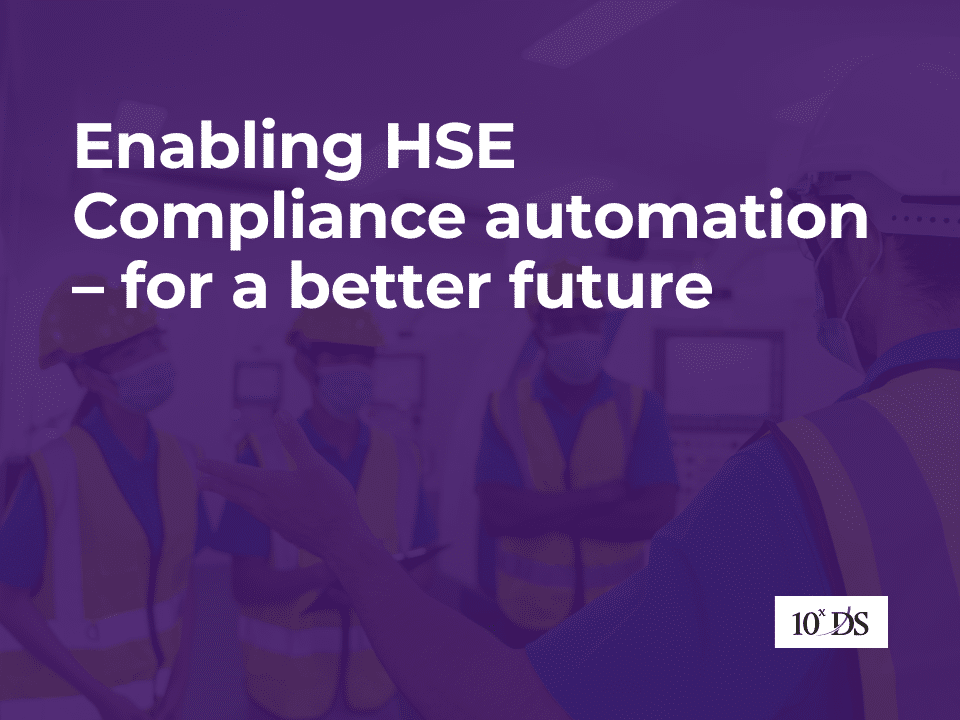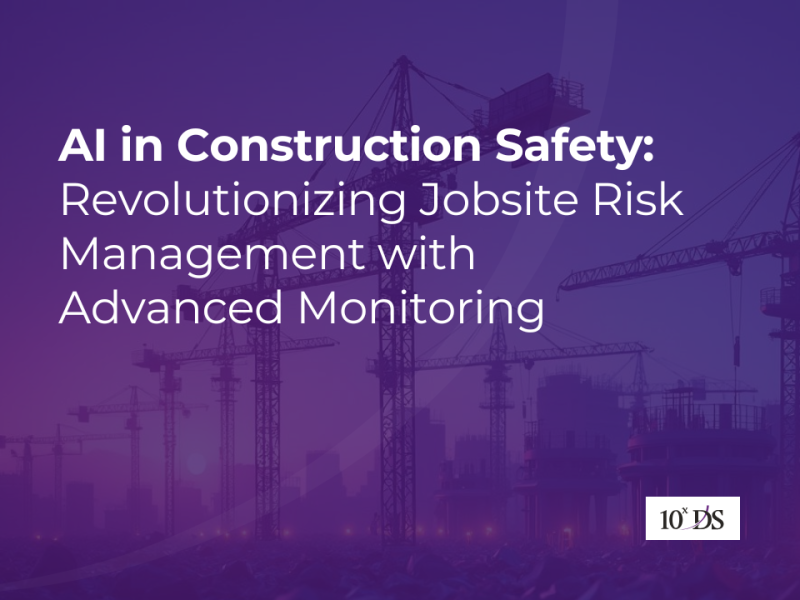
Enabling HSE Compliance automation – for a better future
Imagine a construction site where workers aren’t required to wear helmets or harnesses. One day, a worker slips from a high platform and suffers a serious injury. Not only is that a human tragedy, but the company now faces lawsuits, project delays, fines, and reputational damage. If basic HSE standards had been followed—like proper safety gear and fall protection—this incident could have been prevented. So, HSE isn’t just paperwork; it’s about protecting people, saving money, and keeping operations running smoothly.
What is HSE Compliance?
HSE compliance refers to an organization’s adherence to laws, regulations, standards, and best practices related to health, safety, and the environment. It ensures that businesses operate in a way that safeguards employee well-being, public safety, and the surrounding environment. The core components include:
- Occupational Health (like monitoring exposure to harmful substances and ensuring medical fitness)
- Safety Management (such as risk assessments, emergency preparedness, and safe work procedures), and
- Environmental Protection (like waste management, emissions control, and resource conservation).
Together, these components form a framework that minimizes risks, promotes a culture of responsibility, and ensures legal and ethical operations.
While the basic principles of HSE are universal, how they apply can vary significantly across industries. For example, in oil and gas, HSE compliance emphasizes hazardous chemical handling, explosion prevention, and environmental spill control. In construction, the focus shifts more to fall protection, heavy machinery safety, and noise management. Meanwhile, in healthcare, compliance includes infection control, safe disposal of biohazards, and ergonomic working conditions. Each sector tailors HSE policies to its unique risks and regulatory environment, but the common goal remains: protecting people, property, and the planet.
How can we automate HSE Compliance?
Automation in HSE compliance involves using technology to streamline, monitor, and enforce health, safety, and environmental regulations without constant manual intervention. By integrating tools like IoT sensors, computer vision, AI, and digital reporting systems, companies can proactively identify risks, ensure policy enforcement, and reduce human error. This not only improves efficiency but also creates a safer, more transparent work environment where compliance becomes part of the operational flow rather than a reactive task.
- Real-time PPE detection using AI cameras to alert non-compliance.
- Automated air quality monitoring with IoT sensors for hazardous gas levels.
- Digital incident reporting via mobile apps with auto-filled data and GPS tagging.
- AI-driven risk assessments using historical safety data and predictive analytics.
- Smart fire detection systems that trigger alarms and notify emergency responders.
- Automated permit-to-work systems that ensure only authorized personnel can perform high-risk tasks.
Computer Vision for HSE Compliance
Think of a worker nearly tripping over a loose cable or a forklift almost hitting a pedestrian on the factory floor. These events are critical warning signs—they highlight gaps in safety without the cost of an actual accident. However, near misses often go unreported due to human oversight, fear of blame, or simply not noticing them, which means lost opportunities to improve safety.
This is where Computer Vision can revolutionize the game. By using AI-powered cameras and video analytics, organizations can automatically detect and log near misses in real-time—like identifying when a person enters a restricted zone, when PPE is missing, or when machinery gets too close to a human. No need to rely on someone to report it. The system collects unbiased data, analyzes behavior patterns, and even predicts future risks. Over time, this builds a proactive safety culture, turning near misses from forgotten close calls into key drivers of preventive action. It shifts safety from reactive to predictive—changing the entire perspective.
The table below summarizes various Computer vision use cases in HSE Compliance:
| Use Case | Description | Benefit |
|---|---|---|
| PPE Detection | Detects if workers are wearing helmets, gloves, vests, goggles, etc. | Reduces injury risk, ensures PPE compliance in real time |
| Intrusion/Zone Violation Detection | Alerts when personnel enter hazardous or restricted areas | Prevents accidents and unauthorized access |
| Slip, Trip, and Fall Detection | Identifies sudden falls or abnormal movements | Enables immediate response and root cause analysis |
| Proximity Monitoring | Tracks distance between humans and machines or vehicles | Reduces collision risks, improves traffic management |
| Fire and Smoke Detection | Detects early signs of fire or smoke through visual analysis | Enables faster evacuation and response, minimizes damage |
| Fatigue Detection | Monitors facial cues and posture for signs of drowsiness or inattention | Prevents fatigue-related incidents, especially in transport and heavy ops |
| Improper Waste Disposal Detection | Identifies if waste is being dumped improperly or mixed with hazardous material | Supports environmental compliance and waste segregation |
| Crowd Density Monitoring | Monitors the number of people in confined or regulated spaces | Ensures safe distancing and prevents overcrowding in emergencies |
| Unsafe Behavior Recognition | Flags dangerous acts like running, climbing without gear, or horseplay | Promotes safer behavior through real-time alerts and behavior analytics |
| Vehicle Movement Tracking | Detects unsafe driving patterns or wrong-way movements in site vehicles | Improves traffic flow, reduces on-site vehicular accidents |
Companies need to go beyond checkbox compliance and build a proactive, tech-enabled safety culture. This starts with investing in training and awareness to ensure every employee understands safety protocols and environmental responsibilities. Implementing digital tools—such as computer vision, IoT sensors, and mobile apps—can help monitor compliance in real time and eliminate manual gaps. Regular audits and data analysis are essential to identify trends, predict incidents, and continuously improve safety policies. Leadership must be actively engaged in driving safety culture, making HSE a core business value rather than just an operational requirement. Additionally, collaboration across departments is crucial to fully integrate HSE into every aspect of the business, from procurement to operations to maintenance.
The future of HSE compliance is smart, data-driven, and predictive. We’re moving toward systems that don’t just react to incidents but actively anticipate and prevent them. This shift will see the widespread adoption of AI and Computer Vision for continuous behavioral and environmental monitoring, along with predictive analytics that leverage historical data to forecast risks before they arise. Wearables will play a key role in tracking worker vitals and stress levels in real time, while digital twins of workplaces will allow for the simulation and optimization of safety scenarios. Additionally, sustainability will become deeply integrated, aligning HSE efforts with ESG goals and carbon footprint tracking. Ultimately, HSE compliance will evolve from being a regulatory burden to becoming a strategic advantage, enabling businesses to operate more safely, efficiently, and responsibly.


